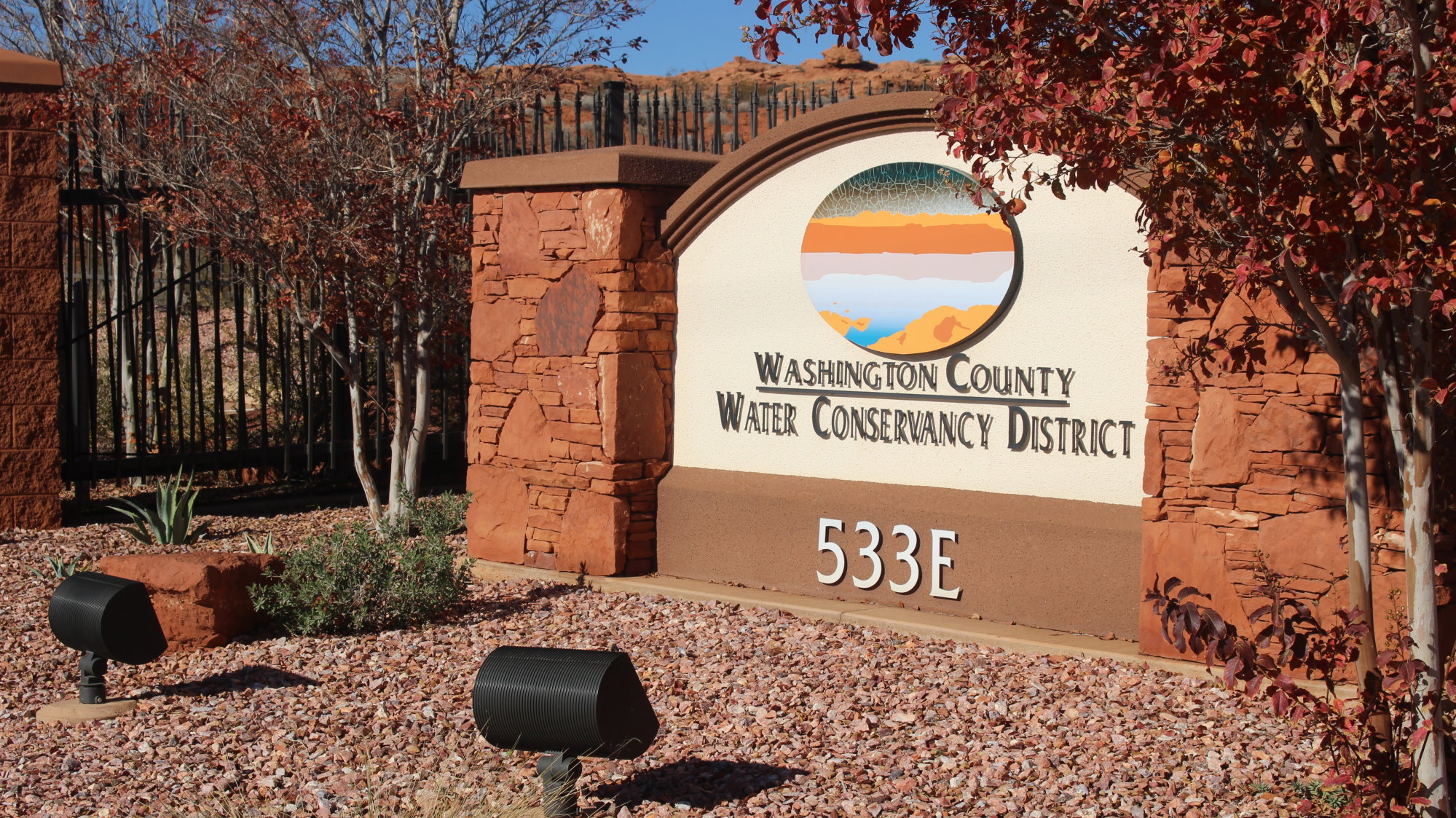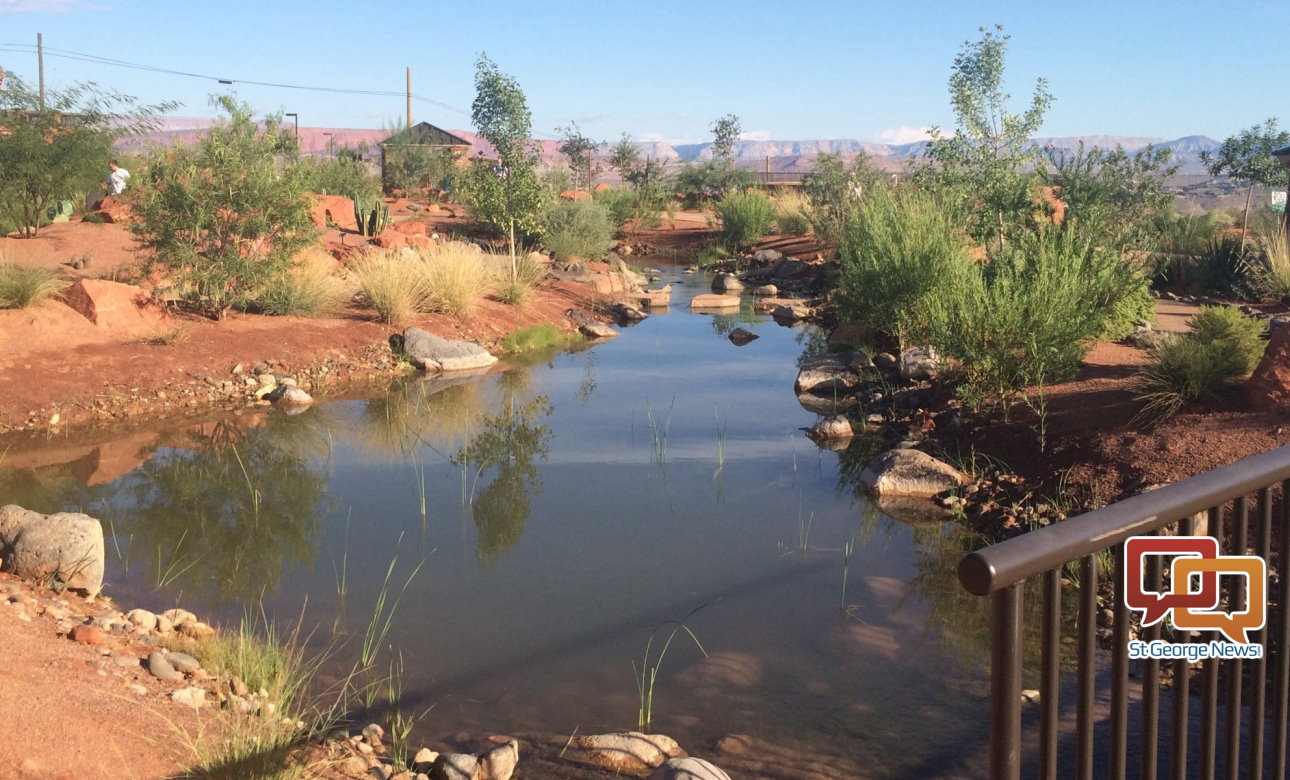ST. GEORGE — Last month, the Utah Division of Water Resources reported that water conservation efforts have helped meet growing population needs while postponing the need for water development projects.

While state officials primarily referred to water projects in northern Utah, the southwest corner of the state has also seen its own successes with conservation efforts during an ongoing drought, according to local water officials.
“We’ve seen how implementing water conservation strategies can delay large-scale infrastructure projects,” Todd Adams, director of the Utah Division of Water Resources, said in a press release.
“When the Legislature passed the Bear River Development Act in 1991, the projected need for the water was in 2015. Thanks primarily to conservation efforts, new technology and some smaller water development projects, current projections indicate the water won’t be needed until 2045 to 2050.”
The state has launched several water conservation projects in recent years that Adams gave credit to Utah’s citizens and private sectors for embracing.
“We appreciate those Utahns and sectors who do their part to conserve this precious resource by embracing a waterwise ethic to safeguard our future,” Adams aid. “Using water wisely is always the right thing to do, whether the state is experiencing drought or not. The division encourages and promotes water conservation wherever it can be implemented – which is everywhere, including your tap.”
State conservation efforts have included the creation of regional water conservation goals and plans, water efficiency projects, the “Slow the flow” information campaign, rebates and the metering of secondary water sources.
Local efforts
In Southern Utah, Zachary Renstrom, the general manager of the Washington County Water Conservancy District, said the district has seen its own success with water conservation over the years thanks to collective efforts of the community. Much of that success, Renstrom said, has come through educating the public.

According to the latest data available from the Utah Division of Water Resources, Washington County’s per capita water use decreased 7.5% from 2010 to 2018.
“Our citizens are naturally responding, and I think it shows a couple of things – that our citizens here care about water, they care about the environment, they care about the reliability of our water – and that they are willing to invest their time, effort and energy into making that happen,” Renstrom said.
Under regional water conservation goals – which includes Washington and Kane counties – the region is slated to reduce water use 14%, with 262 gallons per capita by 2030 and ultimately 22%, with 237 gallons per capita by 2065. The regional plan uses 305 gallons per capita per day as a baseline.
The water district either oversees, or is a partner in, several water conservation efforts and programs.

This includes demonstration gardens like the Red Hills Desert Garden, water-efficient landscape workshops, local media campaigns, the “Save the Towel” partnership with local hotels and spas, requiring water conservation plans from municipal customers, water-smart rebates and several other programs.
“We’ve got so many programs here, I’d hate to choose one or two of them because so many of them are effective,” Renstrom said.
Has water conservation postponed the need for the Lake Powell Pipeline?
As with other water projects, some question whether conservation efforts in Southern Utah delayed the need for the Lake Powell Pipeline. Renstrom said they have but won’t for much longer.
“We’ve gotten to the point that we’ve conserved a big chunk of water already, and we’re still 10 years out from the pipeline,” Renstrom said. “When we start projecting 10 years out, it shows we’re going to get to a critical situation that will require us to have the Lake Powell Pipeline.”
The 140-mile pipeline would carry water from Lake Powell to the Sand Hollow Reservoir in Washington County in order to supplement the county’s current and only water resource – the Virgin River basin.
Recently state and local water officials asked the Bureau of Reclamation to slow its timeline for the potential approval of the pipeline due to concerns raised by neighboring states that also rely on the Colorado River for water. The additional time will be used to review concerns and address them in a revised environmental study related to the project.
“We want to make sure we’re doing everything to make this the best document that’s ever been produced and that comments are appropriately addressed,” Renstrom said.
Drought and climate change
“In the future, we’re expecting a drier climate,” Renstrom said. “We are expecting to be in drought contingency phases more, and that’s one of the biggest arguments for the Lake Powell Pipeline.”

Pipeline aside, Renstrom said the climate is expected to become increasing dry with monsoonal rains being reduced to short-lived storms that drop large amounts of rain like the one that hit St. George in August.
“Yes, we are planning for a drier climate … and that’s one of the reasons we’re so adamant about our projects and making sure we have the resilience to withstand fluctuations in weather and the climate.”
The region has been in a drought for 16 of the last 20 years, Karry Rathje, a spokeswoman for the water district, said, adding that despite that, the county has been able to conserve water while a drying climate has gradually decreased supply.
“Despite the drought conditions, we’re managed to reduce our per capita use by 30% from 2000 to 2018,” Rathje said. “We have less water and we’re using less water. Undoubtedly, conservation has extended our demand date for the Lake Powell Pipeline and other projects.”
However, both Renstrom and Rathje have said water conservation and the need for a secondary source of water for the county need to be pursued hand-in-hand in order to secure future water needs.
Copyright St. George News, SaintGeorgeUtah.com LLC, 2020, all rights reserved.